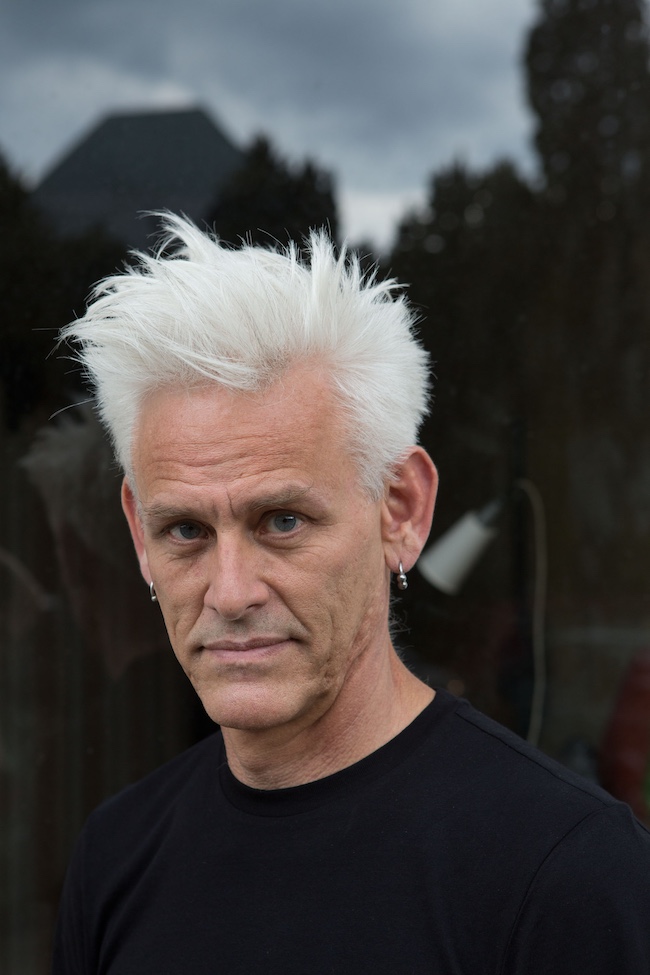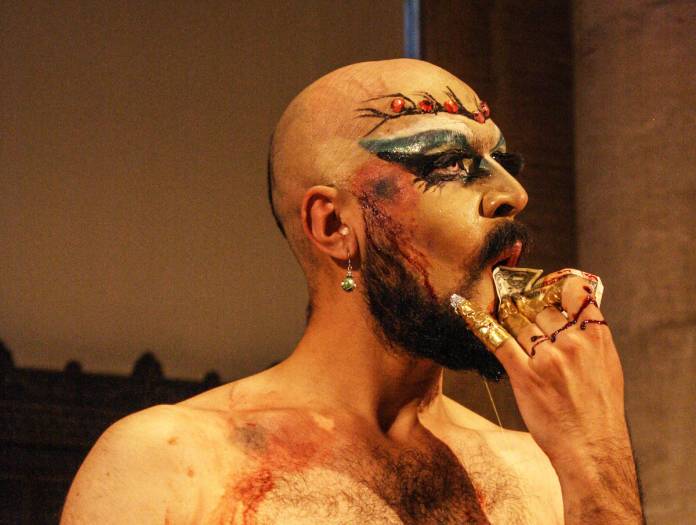DANCE Choreographer Jess Curtis grew up in Chico and studied dance and English at Cal State there. Then he came to San Francisco, which changed his perspective.
“I grew up a nice middle-class white kid,” he said, “I thought, ‘Oh, wait, there are so many things in my life that have been excluding so many people in different ways.'”
Curtis, now the artistic director of Jess Curtis/Gravity, wanted the company he founded in 2000 to be inclusive as well as innovative. In the show Beyond Gravity at CounterPulse this week, there will be sign language interpretation, touch tours of the space so visually impaired patrons can feel what is there, and audio description, where someone explains via a headset what is happening on the stage. (An example: “She is stepping forward with one hand on her hip and the other holding a coffee cup.”)
Curtis is inclusive of styles as well. In the ’80s, he was in iconic companies, such as the group Contraband and the radical performance collective CORE with Keith Hennessy, a dancer and choreographer known as a pioneer in queer and AIDS- themed performance. He and Hennessy didn’t want to be limited to dance, Curtis says.
“We thought, ‘We can talk onstage even if we’re dancers,'” he said. “We can play music and sing and dance and do whatever we want…
“Then at 37, I ran away to join the circus.”
The circus he joined was the experimental Compagnie Cahin-Caha, in France. While in Europe, Curtis got asked to do aerial training for people with disabilities, and he enjoyed working with physically diverse casts. Curtis says he saw how disability arts were much more common and better funded in Europe, and he hopes to bring that sensibility here.

Curtis, splits his time between San Francisco and Berlin, and both his company and his choreography have won numerous awards, including six Isadora Duncan Dance Awards and a ‘Fringe First’ at the Edinburgh Fringe Festival.
Curtis works with partners, such as the Lighthouse for the Blind. Asked about visually impaired people’s response to the audio description, Curtis pauses for a minute.
“There’s a range of reactions because it’s some people’s first experience of contemporary dance, and some people are like, ‘Whoa, that was weird,” he said. “Then one woman, Tiffany Taylor, loved it and came to my next workshop, and she’s been working and consulting with us.”
Sometimes Curtis says he gets the impression that while people appreciate the audio, they don’t know what to make of the performances.
“We joke that blind people and people with visual impairments have the right to experience theater they don’t like, like anyone else,” he said.
Beyond Gravity—whose tagline is, “Witness legends from a future queer revolution and experience new ways of being with each other at a family reunion for a post-human universe”—features three world premieres: aleph is for annals, with live performers and a projected one about a queer militant uprising; From the room beside me, about intimacy, visibility, and closeness; and Lindenau (rifle club) party for the other siblings, about a party for the forgotten in an empty dance hall.
All the artists involved are part of the company’s Artist Services program, which assists mid-career artists, giving them a platform and some fiscal support. Curtis says the company also supports artists to get their work to Europe and to bring international artists here.
“We’re trying to help them utilize our administrative and production resources,” he said about the choreographers and performers. “It’s a way of saying, ‘Hey world, we can do a little bit better at trying to communicate with each other.'”
BEYOND GRAVITY
October 25-27
CounterPulse, San Franscisco
Tickets and more info here




